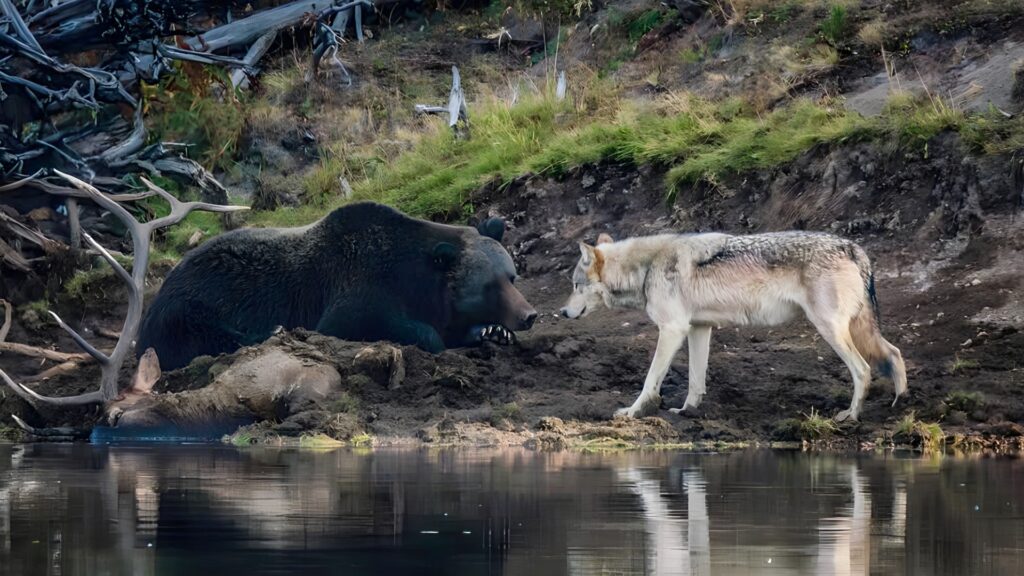
In the wild landscapes of Yellowstone National Park, interactions between grizzly bears and wolf packs are complex and multifaceted. A notable instance of this occurred in October 2021, when a grizzly bear was observed associating with the Junction Butte wolf pack for an extended period. This unusual behavior prompts an exploration into the dynamics between these two apex predators.
The Unusual Friendship Between a Grizzly and a Wolf Pack
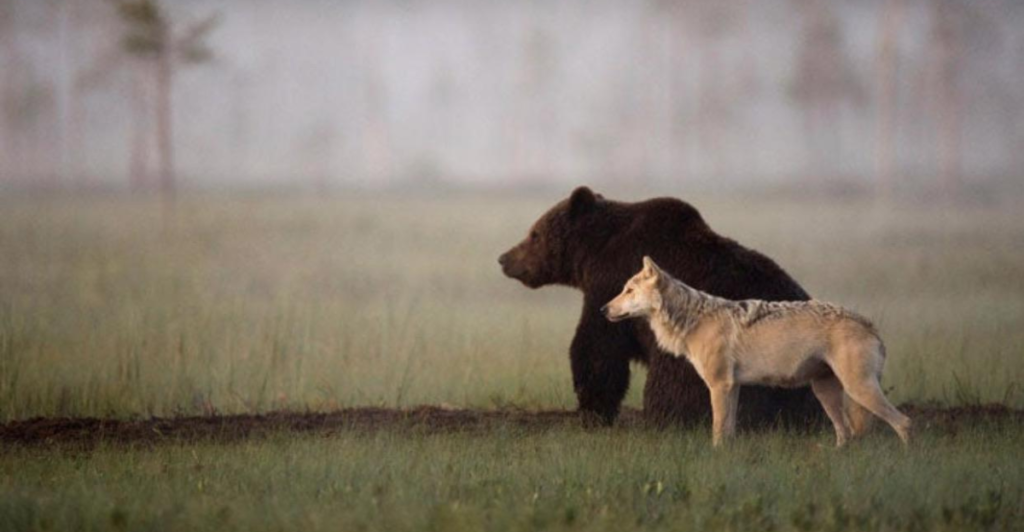
In Yellowstone National Park, a grizzly bear traveling with the Junction Butte wolf pack is a rare sight. Typically, these apex predators maintain a competitive relationship, often clashing over resources. Yet, this bear spent weeks lingering near the pack, walking, resting, and seemingly coexisting. Such extended interaction between these species is virtually unheard of, especially without visible aggression. While this scenario might seem like a burgeoning “friendship,” wildlife experts agree that survival instincts, not camaraderie, likely drive this behavior. It’s nature’s way of balancing survival with calculated risks.
Food as the Likely Motivator
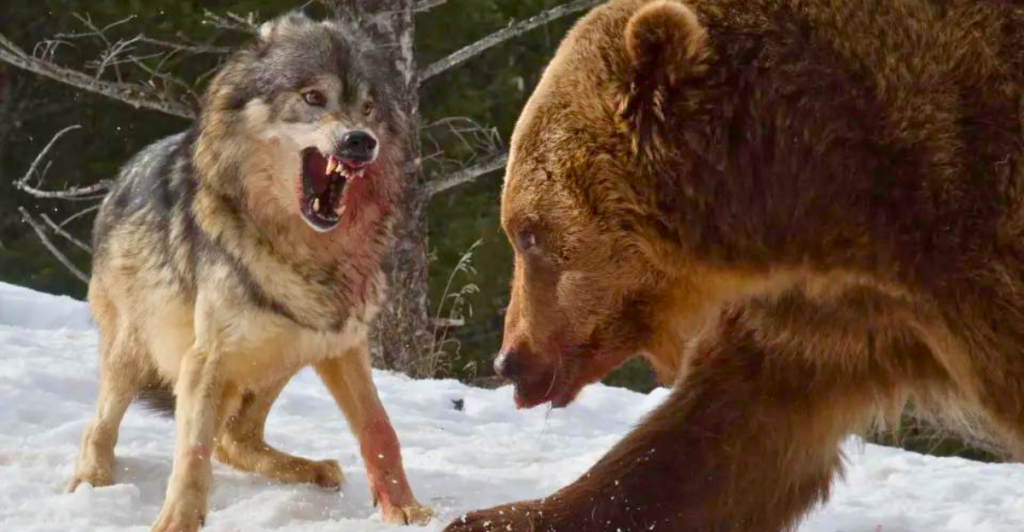
Food scarcity often compels predators to act in ways that might seem out of character. During fall, grizzlies enter hyperphagia, a phase where they eat incessantly to build fat reserves for hibernation. This grizzly likely followed the wolf pack to access leftovers from their kills, ensuring a steady supply of high-calorie food with minimal effort. Wolves, often willing to fight over carcasses, may have chosen to tolerate the bear’s presence rather than risk injury in an altercation. Survival necessitates cooperation when resources grow scarce.
Calculating the Risks and Rewards
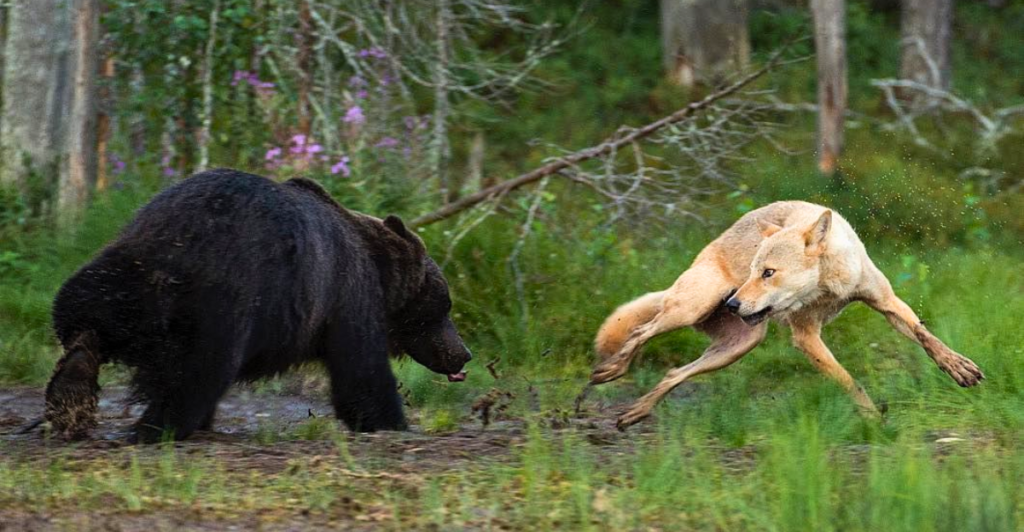
Both species likely assessed the risks and rewards of their interactions. For the grizzly, scavenging from wolf kills was a high-reward strategy with manageable risks. Its size and strength reduced the threat of retaliation. Wolves, on the other hand, may have decided that sharing their kill was safer than confronting the bear, which could injure their pack members. Nature’s survival strategies aren’t just about dominance; they’re about calculated compromises. Each predator weighed its odds in this rare and fascinating example of tolerance.
Why Hyperphagia Drives Grizzly Behavior
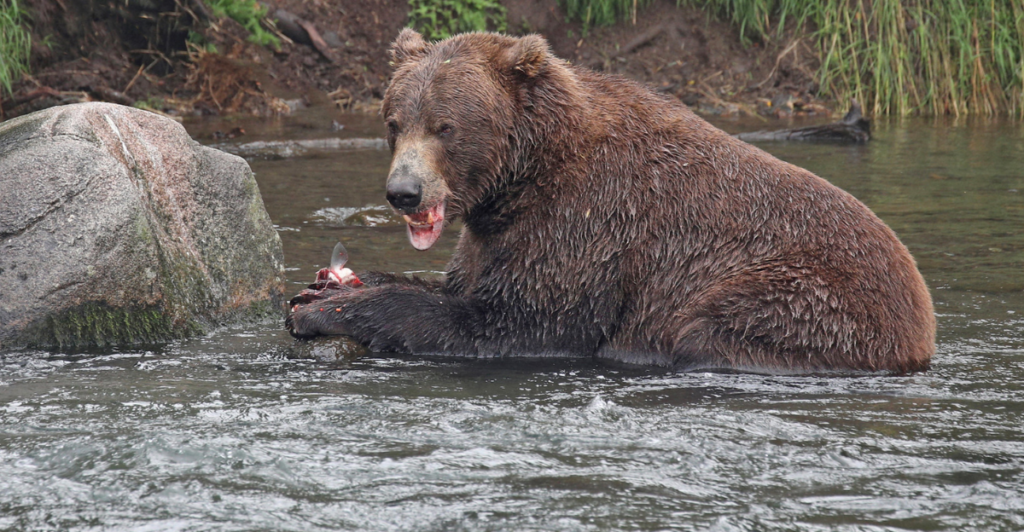
Hyperphagia, the biological drive to eat relentlessly in preparation for hibernation, is one of the main reasons grizzlies take risks in the fall. During this period, they roam widely in search of food, sometimes scavenging kills from other predators like wolves or mountain lions. The grizzly observed with the wolf pack likely found an opportunity for consistent meals with minimal effort. This natural urge to overeat before winter changes typical predator behavior, creating scenarios like this one where the grizzly adapted its strategy for survival.
Wolves’ Strategic Tolerance
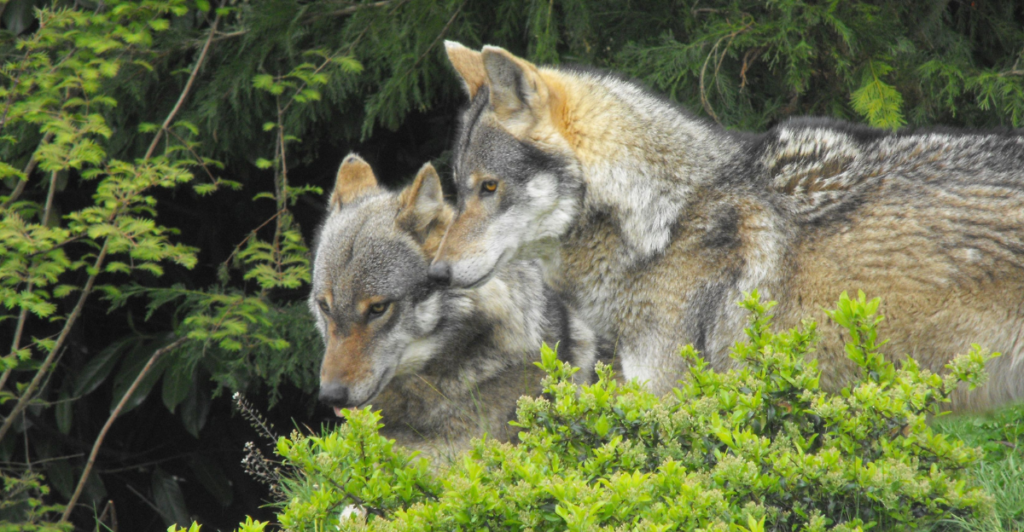
While wolves are fierce protectors of their kills, they can display remarkable adaptability when faced with unusual challenges. In this case, the pack likely tolerated the grizzly because driving it away would risk injuries. A wounded wolf can hinder the entire pack, especially with winter approaching. By allowing the grizzly to stay, the wolves may have decided to conserve energy and focus on future hunts. This calculated truce highlights wolves’ ability to assess threats and adapt their behavior for the good of the pack.
Grizzlies as Opportunistic Foragers
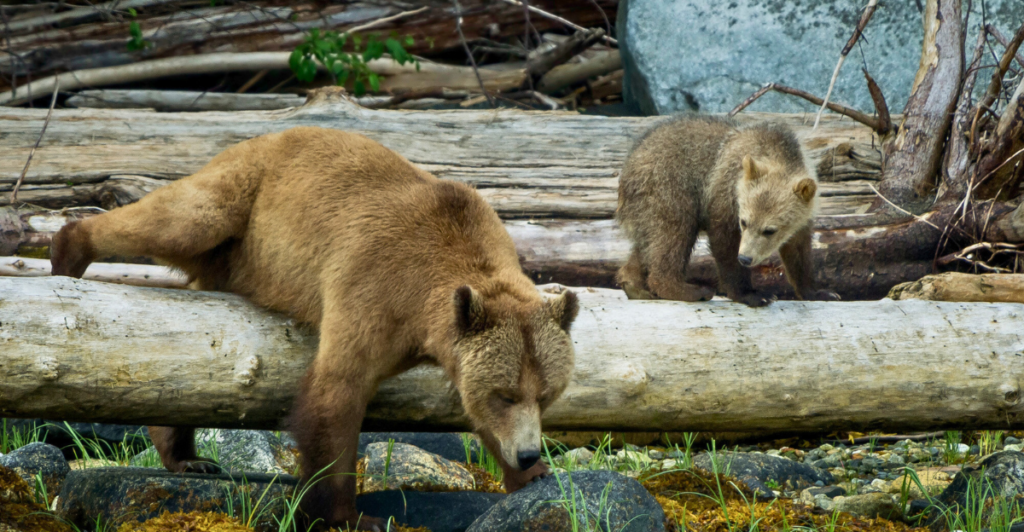
Grizzly bears are renowned for their opportunistic feeding habits. While they’re capable hunters, they prefer scavenging when possible, as it requires less energy. A grizzly might even lie on a carcass to claim ownership, deterring others from accessing it. This bear’s association with the wolf pack aligns with this behavior. By following the pack, it could take advantage of its hunting success without expending energy on its own. Such opportunism underscores the bear’s adaptability, a trait essential for surviving Yellowstone’s harsh winters.
The Role of Yellowstone’s Ecosystem
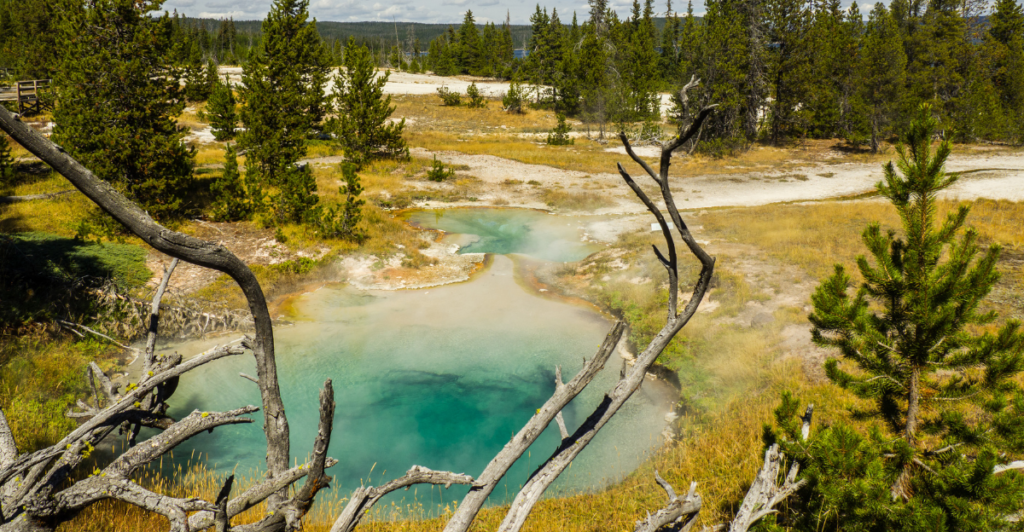
Yellowstone is a prime location for observing predator interactions due to its unique ecosystem. Open grasslands make it easier to see wildlife, while the park’s high populations of wolves and bears create opportunities for encounters. The wolf pack’s large size and the grizzly’s persistence highlight how the park’s environment fosters interspecies interactions. Unlike denser forests, Yellowstone’s landscapes provide clear views of these dynamics, offering a rare glimpse into the survival strategies of apex predators in one of the world’s most studied ecosystems.
How Wolves and Bears Impact Each Other
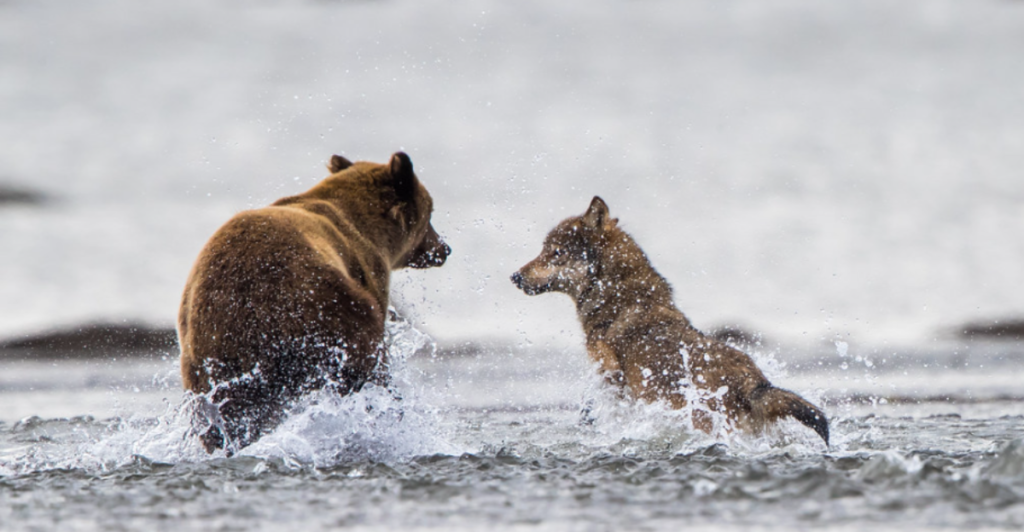
Interactions between wolves and bears have ripple effects on the ecosystem. A grizzly’s presence near a wolf pack can lower the pack’s hunting efficiency, as wolves may delay their next kill to scavenge leftovers. This changes prey populations and predator behaviors, showing how intertwined these species are. By influencing each other’s actions, wolves and grizzlies shape Yellowstone’s ecological balance. This interaction also demonstrates the constant push and pull in nature, where every decision, whether to fight, flee, or tolerate, has broader consequences.
Individual Personalities Play a Role
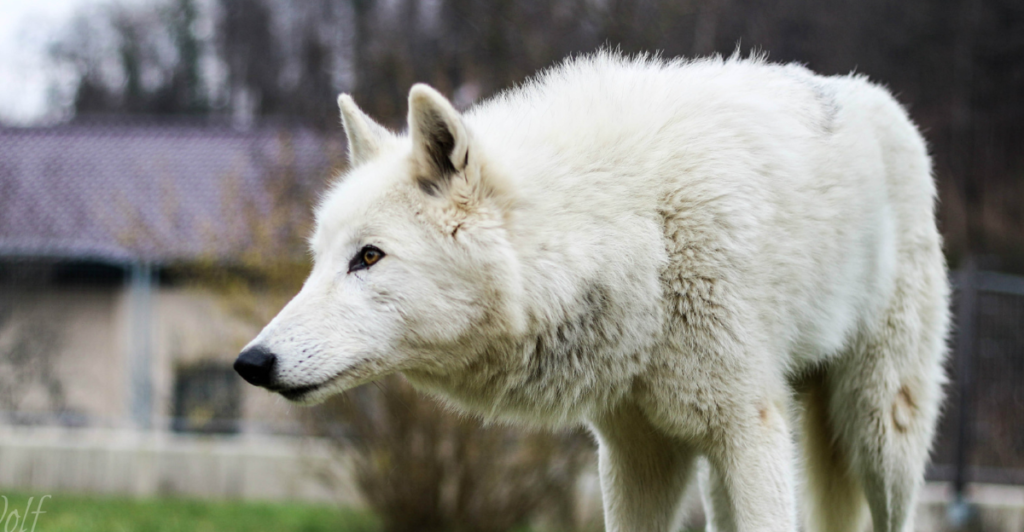
Animal behavior isn’t entirely dictated by instinct. Individual personalities matter. Some grizzlies are bolder and more tolerant of risks, while others are more cautious. Similarly, wolf packs vary in their level of aggression or tolerance toward outsiders. The grizzly observed with this pack may have had a particularly daring disposition, allowing it to approach the wolves without fear. Likewise, the wolves’ acceptance could reflect a less aggressive pack dynamic. Such unique traits make wildlife interactions unpredictable and fascinating to study.
The Influence of Seasonal Changes
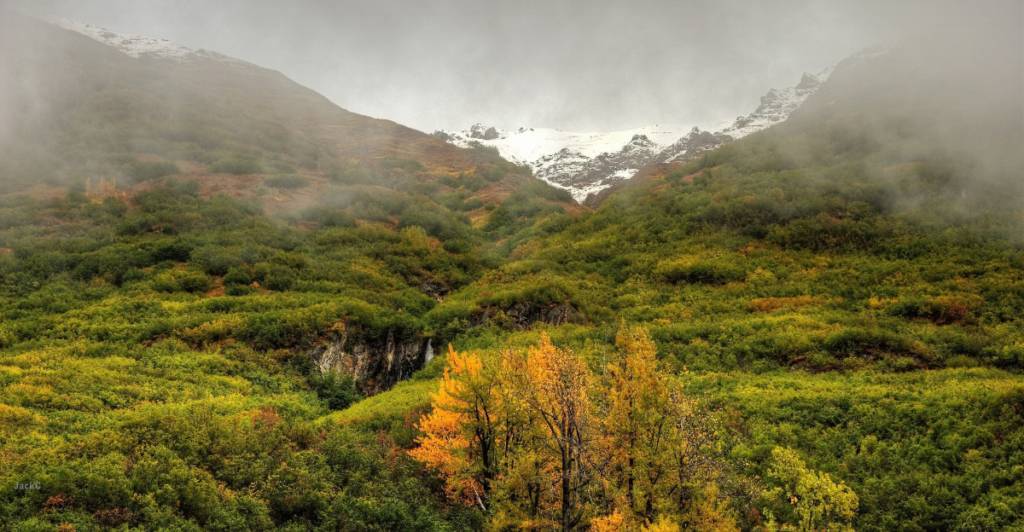
Seasonal changes heavily influence predator behavior. As winter looms, the urgency to secure food intensifies for both wolves and grizzlies. This seasonal pressure likely played a role in the unusual association observed. The grizzly might have calculated that sticking with the wolves offered the best chance of finding food, while the pack might have tolerated the bear to avoid risky confrontations. These adaptations highlight how survival strategies shift with the seasons, forcing predators to make unconventional choices to endure Yellowstone’s brutal winters.
Competition Versus Cooperation
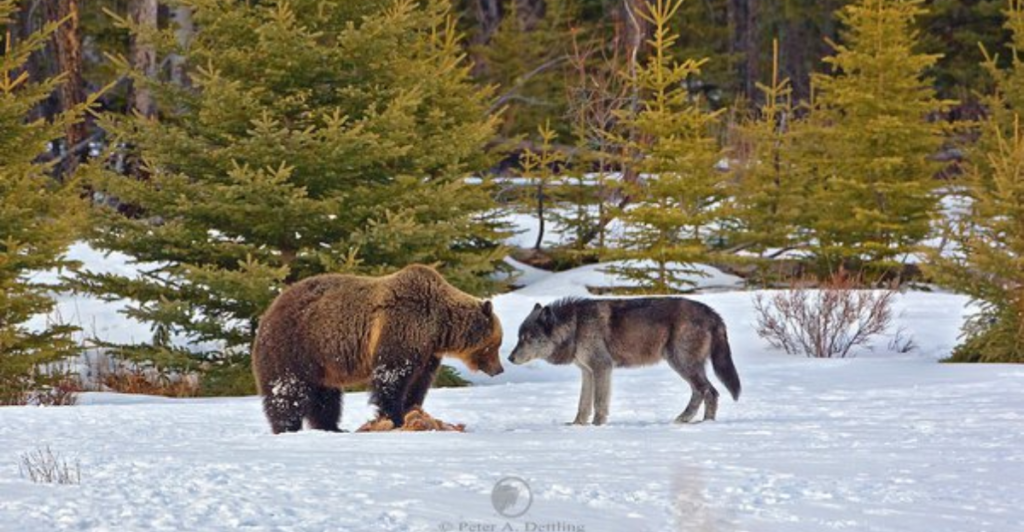
In the wild, competition often gives way to cooperation when survival is at stake. While grizzlies and wolves usually compete for resources, they can coexist when mutual benefits outweigh conflicts. This bear’s presence with the wolf pack exemplifies this balance. The wolves likely recognized that driving away the bear wasn’t worth the cost, while the bear took advantage of the pack’s hunting prowess. Such moments of cooperation remind us that survival in nature is rarely black and white. It’s a spectrum of calculated decisions.
Documenting Rare Wildlife Interactions
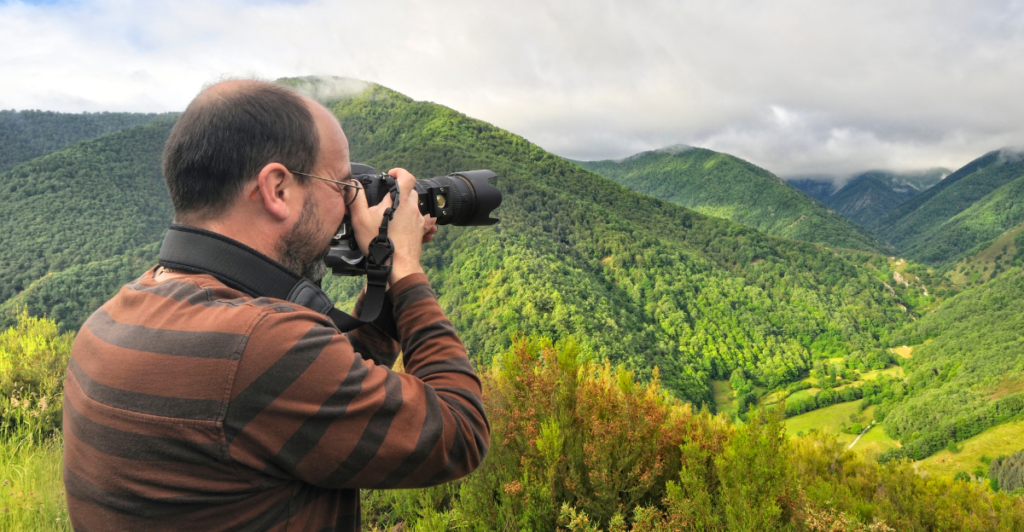
Yellowstone’s open landscapes and increasing human observation allow for rare wildlife behaviors to be documented. Encounters like this grizzly-wolf association might have gone unnoticed in denser habitats. Observations like these provide invaluable insights into predator behavior, challenging long-held assumptions. While human activity can disrupt wildlife, it also enables researchers and visitors to witness extraordinary moments. Documenting these interactions deepens our understanding of predator ecology, shedding light on the intricate dynamics between species like wolves and grizzlies in the wild.
What This Means for Future Research
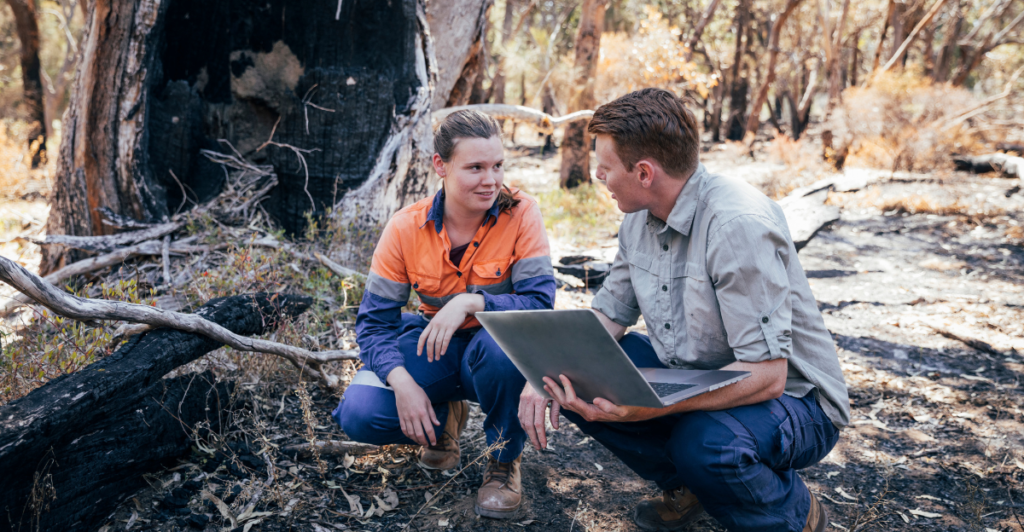
This unique interaction raises important questions for wildlife researchers. How often do wolves and bears tolerate each other? What environmental factors drive such behavior? Future studies could explore these dynamics, examining how food availability, individual personalities, and environmental pressures shape interspecies relationships. Understanding these interactions could inform conservation efforts, helping preserve Yellowstone’s delicate balance. This grizzly’s prolonged association with a wolf pack is a reminder that nature’s stories are as complex as they are fascinating, offering endless opportunities for discovery.
Discover more of our trending stories and follow us to keep them appearing in your feed

Meet the Massive Crocodiles That Make Their Homes 40 Feet Underground
13 Most Dangerous Animals in America
10 Animal Species That Have Been Successfully Cloned – Should Scientists Go On?
First Ferret Babies Born from a Clone—What This Means for the Future
Stay connected with us for more stories like this! Follow us to get the latest updates or hit the Follow button at the top of this article, and let us know what you think by leaving your feedback below. We’d love to hear from you!







